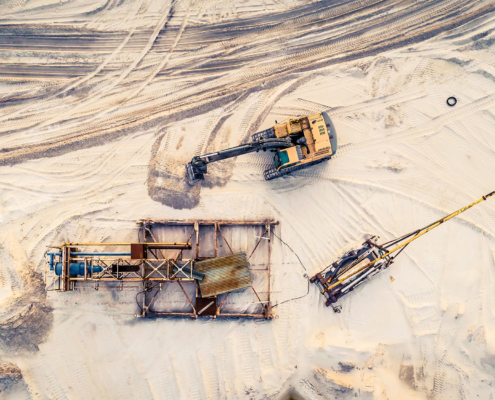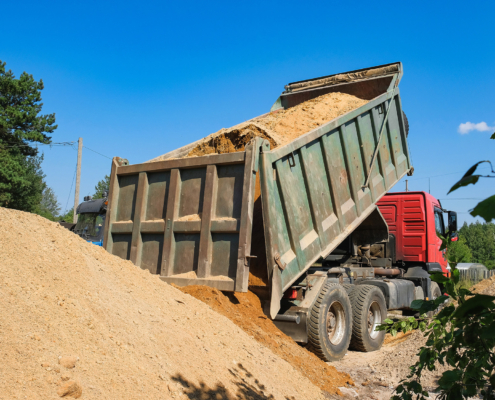 https://pontotocsandandstone.com/wp-content/uploads/2025/09/Frac-Sand-Market-Trends-and-Forecasts.jpg
1250
2000
AbstraktMarketing
/wp-content/uploads/2021/08/Pontotoc-White-Logo.png
AbstraktMarketing2025-09-05 20:26:142025-12-28 16:14:39Navigating Growing Demand: Frac Sand Market Trends and Forecasts
https://pontotocsandandstone.com/wp-content/uploads/2025/09/Frac-Sand-Market-Trends-and-Forecasts.jpg
1250
2000
AbstraktMarketing
/wp-content/uploads/2021/08/Pontotoc-White-Logo.png
AbstraktMarketing2025-09-05 20:26:142025-12-28 16:14:39Navigating Growing Demand: Frac Sand Market Trends and ForecastsWhat Are the Differences Between Fracing vs. Drilling?
While there are similarities between fracing and drilling, oil and gas operations need to be aware of their differences to maximize efficiency. In this article, we’ll explore the basics of fracing vs. drilling and how each process varies. We’ll also walk through natural gas extraction methods and the complete oil drilling process. Let’s jump right in!
The Basics of Fracing
Fracing is a hydraulic fracturing process that involves the injection of pressurized water, sand, and chemicals into the rock formation to extract oil or natural gas from shale. This process often occurs at depths greater than 6,000 feet and can access areas that traditional drilling cannot. While fracing has been known to improve energy production, it also comes with several environmental risks, such as groundwater contamination and air pollution.
The Basics of Drilling
Drilling is the process of penetrating an underground reservoir to access oil or natural gas. It’s usually done on land but can also take place offshore. Drilling requires specialized equipment, such as rigs and pumps, to extract resources deep beneath the surface. Drilling operations must be conducted cautiously to minimize negative environmental impacts, including noise pollution, soil erosion, and water contamination.
Differentiating Fracing vs. Drilling
When considering fracing vs. drilling, there are a few key differences that should be taken into account, especially when evaluating which technology is most suitable for your operations. For example, fracing typically costs more than traditional drilling techniques due to its complexity and the expensive equipment needed for extraction. However, fracing is much faster than drilling. It can take only days or weeks, versus months or years for a single well using conventional methods.
However, due to its potential environmental risks and complex process requirements, fracing may only sometimes be ideal for all operations depending on local regulations and risk levels associated with each project site.
If you’re interested in the differences between fracing and drilling processes, be sure to also check out what frac sand is used for in the drilling process.
Natural Gas Extraction Methods
Natural gas extraction is an important part of the energy industry. This is a complex process that involves the use of various technologies and techniques. As such, numerous challenges are associated with natural gas extraction, from safety and environmental concerns to economic considerations.
Different methods can be used for extracting natural gas depending on the deposit’s nature and the well’s location. Let’s take a look at a few:
Hydraulic Fracturing
As briefly discussed earlier in this article, hydraulic fracturing is a standard method to access natural gas deposits deep underground. This technique involves using high-pressure fluid to fracture rocks to access deeply embedded reserves of natural gas. While fracing can be an efficient way to extract natural gas, it also has drawbacks.
For example, the process can create small earthquakes and release methane into the environment if not done correctly or monitored closely. Additionally, fracing requires large amounts of water, which can contaminate water if not managed carefully.
Horizontal Drilling
As you also know, horizontal drilling is another method for extracting natural gas from deep reserves. This technique begins by drilling a vertical well before turning it horizontally to access greater amounts of oil or gas that would otherwise be inaccessible via traditional vertical drilling techniques.
Horizontal drilling is often used when targeting shale formations or other hard-to-reach reserves since it provides greater efficiency than traditional vertical drilling techniques. However, horizontal drilling poses risks, including an increased risk of blowouts due to increased pressure on wells during directional changes and insufficient casing strength at lateral turns leading to wellbore instability problems.
Gas Hydrate Mining
Gas hydrate mining is an alternative method for extracting natural gas from deep sea reserves or other challenging locations where traditional extraction methods are not feasible or cost effective. This method involves pumping hot fluids into areas where methane hydrates are present to break them down into liquid methane to be pumped out through pipes back up onto land. There, it can be stored or sold for energy generation.
While this method offers potential advantages compared to traditional processes, it also carries its own risks since too much heat could destabilize surrounding seafloor structures.
Coal Bed Methane Extraction
Coal bed methane extraction is another alternative method for extracting shale gas deposits in inaccessible areas or remote locations where traditional methods are not feasible or cost effective. This process involves pumping out water from coal seams to release trapped gases which can then be collected using specialized equipment.
While this technique has been successfully used in some cases, it also carries certain environmental risks, such as increased air pollution due to higher emissions from burning coal beds and potential water contamination from improper wastewater handling.
The Oil Drilling Process Analyzed
Outlined below is a typical eight-step oil drilling process:
- Site preparation: The first step in oil drilling involves selecting a site with the potential for oil. The area is cleared of vegetation, and the soil is compacted to create a stable base for the drilling rig.
- Drilling the surface hole: Once the site is prepared, the drilling rig is set up, and the drilling of the surface hole begins. The surface hole is typically the largest and shallowest hole that is drilled and used to provide access to deeper formations.
- Setting casing: Next, the casing is set to stabilize the wellbore and prevent it from collapsing. Casing is a series of steel pipes inserted into the wellbore and cemented in place.
- Drilling the intermediate hole: Once the surface casing is set, drilling of the intermediate hole begins. The intermediate hole is typically narrower than the surface hole and is drilled to reach the target formation.
- Setting intermediate casing: Intermediate casing is set to stabilize the wellbore and prevent it from collapsing.
- Drilling the production hole: Once the intermediate casing is set, the drilling of the production hole begins. The production hole is the final and narrowest hole drilled and used to extract oil and gas from the target formation.
- Completing the well: Once the production hole is drilled, the well is completed by installing equipment such as a wellhead, valves, and production tubing. This equipment controls the flow of oil and gas from the well.
- Production: Oil and gas are extracted from the well using various techniques such as natural flow, artificial lift, and hydraulic fracturing.
Pontotoc Sand & Stone: Your Source for Frac Sand
The decision between fracing vs. drilling ultimately comes down to understanding which technology best suits your needs from an efficiency and environmental impact perspective. Companies need to understand both to make informed decisions regarding their energy sources and how they affect our environment both now and in the future.
For any gas and oil project, trust Pontotoc as your go-to source for frac sand. Our high-grade sand ensures a successful drill. Get in touch with our team today.
Related Postings
 https://pontotocsandandstone.com/wp-content/uploads/2025/09/Frac-Sand-Market-Trends-and-Forecasts.jpg
1250
2000
AbstraktMarketing
/wp-content/uploads/2021/08/Pontotoc-White-Logo.png
AbstraktMarketing2025-09-05 20:26:142025-12-28 16:14:39Navigating Growing Demand: Frac Sand Market Trends and Forecasts
https://pontotocsandandstone.com/wp-content/uploads/2025/09/Frac-Sand-Market-Trends-and-Forecasts.jpg
1250
2000
AbstraktMarketing
/wp-content/uploads/2021/08/Pontotoc-White-Logo.png
AbstraktMarketing2025-09-05 20:26:142025-12-28 16:14:39Navigating Growing Demand: Frac Sand Market Trends and Forecasts https://pontotocsandandstone.com/wp-content/uploads/2025/08/How-Supply-Chain-Disruptions-Impact-Frac-Sand-Availability-and-Pricing.jpg
1250
2000
AbstraktMarketing
/wp-content/uploads/2021/08/Pontotoc-White-Logo.png
AbstraktMarketing2025-08-21 20:34:102025-12-28 16:14:39How Supply Chain Disruptions Impact Frac Sand Pricing and Availability
https://pontotocsandandstone.com/wp-content/uploads/2025/08/How-Supply-Chain-Disruptions-Impact-Frac-Sand-Availability-and-Pricing.jpg
1250
2000
AbstraktMarketing
/wp-content/uploads/2021/08/Pontotoc-White-Logo.png
AbstraktMarketing2025-08-21 20:34:102025-12-28 16:14:39How Supply Chain Disruptions Impact Frac Sand Pricing and Availability https://pontotocsandandstone.com/wp-content/uploads/2025/08/large-quary-for-frac-sand-mining.jpg
1250
2000
AbstraktMarketing
/wp-content/uploads/2021/08/Pontotoc-White-Logo.png
AbstraktMarketing2025-08-14 19:56:332025-12-28 16:14:39Understanding the Health and Environmental Impacts of Frac Sand Mining
https://pontotocsandandstone.com/wp-content/uploads/2025/08/large-quary-for-frac-sand-mining.jpg
1250
2000
AbstraktMarketing
/wp-content/uploads/2021/08/Pontotoc-White-Logo.png
AbstraktMarketing2025-08-14 19:56:332025-12-28 16:14:39Understanding the Health and Environmental Impacts of Frac Sand Mining